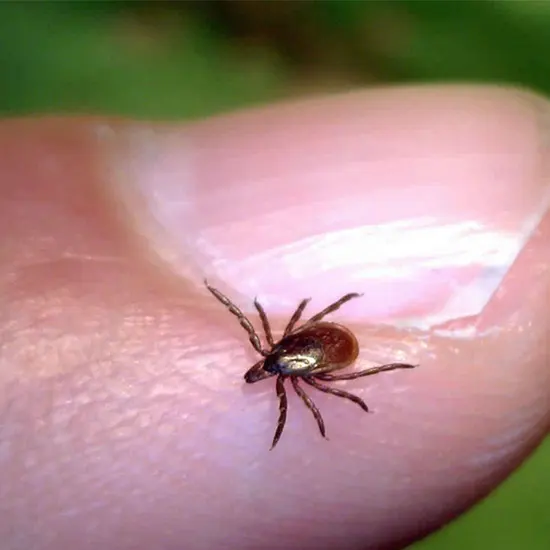
Rickettsial infections are a crew of bacterial infections precipitated via microorganisms belonging to the genus Rickettsia. These microorganisms are commonly transmitted to people via the bites of contaminated ticks, fleas,...
Rickettsial infections are a crew of bacterial infections precipitated via microorganisms belonging to the genus Rickettsia. These microorganisms are commonly transmitted to people via the bites of contaminated ticks, fleas, or lice, though some rickettsial infections can additionally be transmitted through contaminated meals or water.
Early prognosis and therapy are necessary for stopping serious issues and enhancing the possibilities of a full recovery.
What is Rickettsial Infection?
Rickettsial infections are a team of bacterial infections induced via several species of microorganisms in the genus Rickettsia. These microorganisms are normally transmitted to people via the bites of contaminated ticks, fleas, or lice, though some rickettsial infections can additionally be transmitted via contaminated meals or water.
Some rickettsial infections can additionally cause extra extreme complications, such as kidney failure, and respiratory failure.
Explore the Epidemiology of Rickettsial Infection:
The epidemiology of rickettsial infections can range relying on the unique kind of microorganism worried and the geographic location of the place the contamination occurs.
Some of the most frequent rickettsial infections globally include:
Rocky Mountain noticed fever (RMSF)
This contamination is in particular determined in the United States, with most instances going on in the southeastern and south-central areas of the country.
Mediterranean noticed fever
This contamination is determined more often than not in the Mediterranean basin, as well as components of Africa, Asia, and the Middle East
Epidemic typhus
This contamination is located internationally, however, is most frequent in areas with negative sanitation and high-density populations.
Murine typhus
This contamination is observed globally and is most frequent in city areas with excessive densities of rodents.
Scrub typhus
This contamination is determined frequently in rural areas of Asia, which includes India, China, and Southeast Asia.
Rickettsial infections can affect humans of all ages, though some men and women might also be at greater risk, such as those who work or stay in rural areas, those who have interacted in outdoor activities, and those who have weakened immune systems.
Learn about The Pathophysiology of Rickettsial Infection:
The pathophysiology of rickettsial infections includes the invasion and multiplication of microorganisms in host cells, mainly to tissue injury and inflammation.
Different species of Rickettsia can target particular sorts of cells, mainly to a large variety of medical manifestations.
Rickettsia microorganisms enter the human physique via the bites of contaminated ticks, fleas, or lice or by using publicity to contaminated meals or water.
Once inside the body, they invade endothelial cells, which are cells lining the CBC blood vessels, or mononuclear cells of the immune system.
Rickettsia uses host mobile assets to replicate and produce toxins, mainly to phone dying and inflammation.
The immune response to rickettsial contamination entails the activation of T and B cells, which understand bacterial antigens and produce antibodies to clear the infection.
However, in extreme cases, an immoderate immune response can lead to tissue harm and organ failure.
The scientific manifestations of rickettsial infections fluctuate relying on the particular microorganism worried and the host response.
Common signs consist of fever, headache, muscle aches, and rash, which may also grow to extreme problems such as renal failure, respiratory failure, or meningitis.
Signs and Symptoms of Rickettsial Infection
The signs and symptoms and signs of rickettsial infections can differ depending on the precise kind of microorganism concerned and the severity of the infection.
Some frequent signs of rickettsial infections include:
- Fever
- Headache
- Muscle aches
- Fatigue
- Nausea and vomiting
- Loss of appetite
- Rash
- Joint pain
- Abdominal pain
The rash related to rickettsial infections is regularly characterised using small, crimson spots that unfold from the extremities closer to the Serum Electrolytes trunk of the body. The rash may additionally be accompanied by using different signs such as fever, headache, and muscle aches.
In extreme cases, rickettsial infections can lead to extra serious complications, such as kidney failure, respiratory failure, or meningitis.
These issues can end in signs such as confusion, shortness of breath, chest pain, and seizures.
It is essential to notice that the signs of rickettsial infections can be comparable to those of different infectious diseases, making analysis challenging.
If you are experiencing any of these
signs after workable publicity to ticks, fleas, or lice, search for scientific interest promptly.
Early analysis and therapy can enhance results and stop extreme complications.
Diagnosis of Rickettsial Infection
The prognosis of rickettsial infections can be challenging, as the signs can be comparable to those of different infectious diseases. Diagnosis generally includes an aggregate of scientific evaluations, laboratory tests, and imaging studies.
The following checks may additionally be used to diagnose rickettsial infections:
Serologic testing
This includes the detection of antibodies towards Rickettsia microorganisms in the patient's blood.
An upward push in antibody ranges between acute and convalescent serum samples can verify the diagnosis.
Polymerase chain response (PCR) testing
This includes the detection of Rickettsia DNA in blood or tissue samples and the usage of PCR technology.
Immunohistochemistry (IHC)
This entails the detection of Rickettsia antigens in tissue samples, such as pores and skin biopsies.
Culture
This includes the isolation of Rickettsia microorganisms from blood or tissue samples, though this approach can take countless weeks and is no longer usually used.
Imaging research such as chest X-rays or computed tomography (CT) scans may additionally be used to observe issues related to rickettsial infections, such as pneumonia or meningitis.
It is essential to observe that instant analysis and cure are imperative for stopping extreme problems related to rickettsial infections. If you suspect you might also have a rickettsial infection, search for scientific interest promptly.
Complications of Rickettsial Infection
Rickettsial infections can lead to a variety of complications, ranging from moderate to life-threatening, relying on the kind of microorganism worried and the severity of the infection.
Some frequent issues related to rickettsial infections include:
Kidney failure:
Rickettsial infections can motivate injury to the kidneys, mainly to renal failure.
Symptoms may additionally encompass reduced urine output, swelling, and electrolyte imbalances.
Respiratory failure
Severe instances of rickettsial infections can lead to respiratory failure, which can be life-threatening. Symptoms may additionally consist of shortness of breath, fast breathing, and low oxygen levels.
Meningitis
Some species of Rickettsia can invade the central apprehensive system, mainly to meningitis.
Symptoms may also encompass fever, headache, neck stiffness, and altered intellectual status.
Cardiovascular complications
Rickettsial infections can cause infection and harm to the blood vessels, mainly to cardiovascular issues such as myocarditis, pericarditis, and coronary heart failure.
Liver dysfunction
Rickettsial infections can cause harm to the liver, leading to liver dysfunction and multiplied liver enzymes.
Other complications
Rickettsial infections can additionally lead to different complications, such as sepsis, disseminated intravascular coagulation (DIC), and multi-organ failure.
It is vital to observe that immediate analysis and cure are necessary for stopping extreme issues related to rickettsial infections. If you suspect you may additionally have a rickettsial infection, try to find scientific interest promptly.
Treatment of Rickettsial Infection
The cure for rickettsial infections usually includes the use of antibiotics to take away the micro organism inflicting the C-Reactive Protein infection. The unique antibiotic used might also rely on the kind of microorganism worried and the severity of the infection.
Commonly used antibiotics for rickettsial infections include:
Doxycycline
This is the desired antibiotic for treating most rickettsial infections. It is typically given for 7 to 14 days and is fine in casting off the microorganism from the body.
Chloramphenicol
This antibiotic may additionally be used in instances where doxycycline is no longer suitable, such as in pregnant ladies or youngsters below the age of eight.
It is given for 7 to 14 days and can be positive in putting off the bacteria.
Azithromycin
This antibiotic may additionally be used in instances where doxycycline or chloramphenicol can't be used. It is given for 7 to 10 days and can be wonderful in putting off bacteria.
In extreme instances of rickettsial infections, hospitalization may additionally be required for supportive care, such as intravenous fluids, oxygen therapy, and monitoring of organ function.
In addition, problems such as kidney failure, respiratory failure, or meningitis may also require precise treatments.
Rickettsial infections are a crew of bacterial infections that can motivate an extensive variety of symptoms, from a slight fever and rash to life-threatening issues such as kidney failure, respiratory failure, and meningitis.
Prompt prognosis and remedy with antibiotics are integral for stopping extreme issues related to rickettsial infections. If you suspect you may additionally have a rickettsial infection, seek scientific interest promptly.
Tick bites can lead to serious rickettsial infections : Prevention and early detection can save lives!









